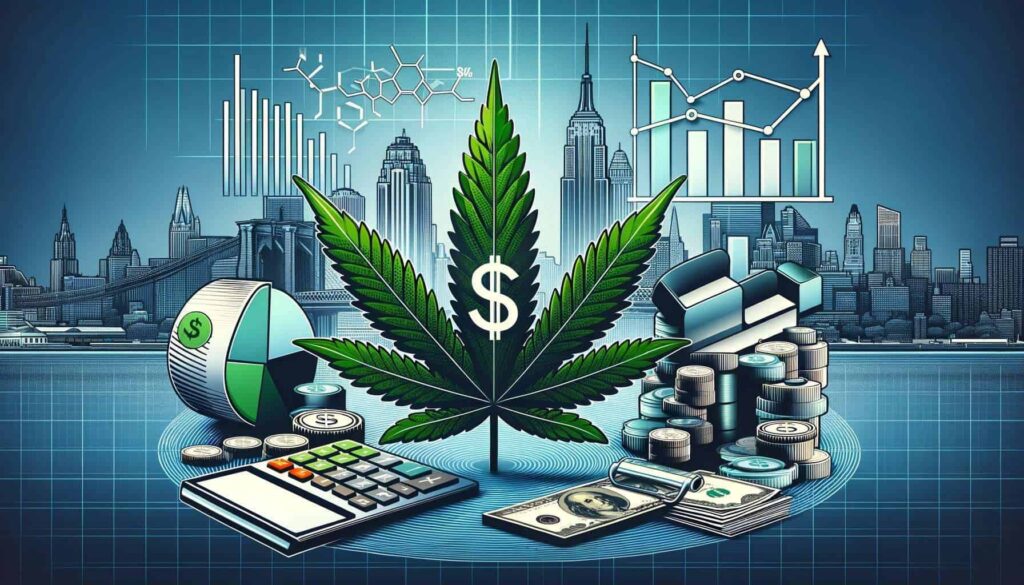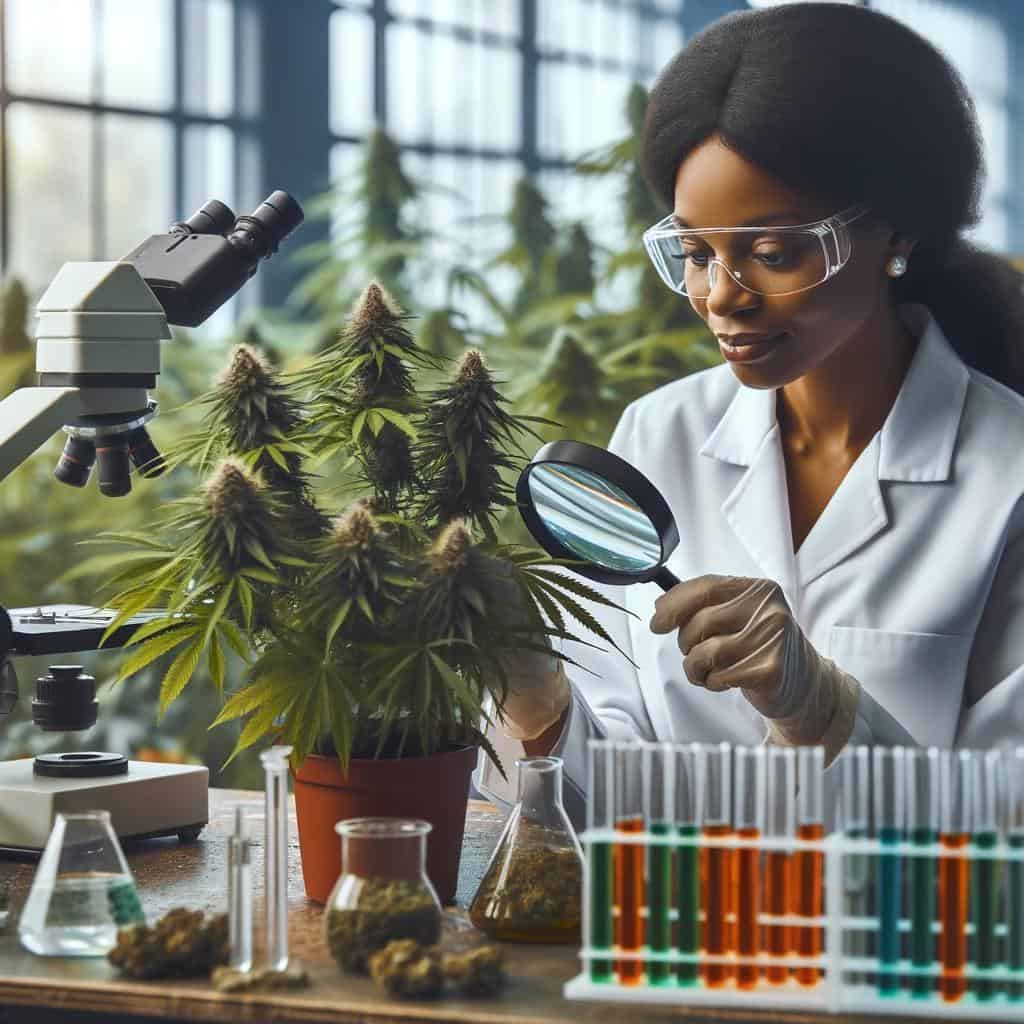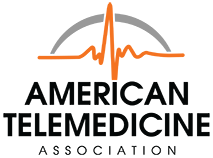- [email protected]
- (619) 304-4004
New York’s medical marijuana taxation, post the 2023–2024 budget amendments, involves specific taxes on distributors and retailers, based on THC content and sales. With rates like $0.005 per milligram for flower and a 13% retail tax, understanding these complex policies is vital for industry compliance and strategy.
Medical Marijuana in New York

The taxation framework for medical marijuana in New York, particularly following the 2023–2024 state budget amendments, presents a complex yet crucial aspect for stakeholders in the cannabis industry. These amendments have broadened the definition of adult-use cannabis products and refined the regulatory mechanisms, including the issuance and revocation of cannabis certificates of registration.
A notable change is the introduction of stricter penalties for unregistered distributors and heightened civil penalties for illicit cannabis activities, effective from May 3, 2023.
Under this framework, distributors of adult-use cannabis products are mandated to pay taxes on their sales to retailers. Retailers, in turn, are responsible for a retail tax on the products sold to consumers.
The tax rates are determined by the THC content: $0.005 per milligram for cannabis flower, $0.008 for concentrated cannabis, and $0.03 for cannabis edibles. Additionally, a 13% retail tax is imposed on the sale or transfer of adult-use cannabis products.
This blog offers an in-depth exploration of New York’s medical marijuana taxation policies, highlighting their implications for businesses and consumers.
Understanding these policies is essential for compliance and strategic business planning in New York’s dynamic medical marijuana market.
The taxation of medical marijuana in New York is governed by the Marihuana Regulation and Taxation Act (MRTA), signed into law on March 31, 2021. This act legalizes and regulates the use of adult-use cannabis, medical cannabis, and hemp, creating a comprehensive framework for the industry.
The Office of Cannabis Management (OCM), governed by the Cannabis Control Board, is responsible for overseeing these regulations.
Under the MRTA, distributors of adult-use cannabis products are required to pay taxes on their sales to retailers. Similarly, retailers must pay a retail tax on the cannabis products they sell or transfer to customers. This structure ensures that the state generates revenue at both the wholesale and retail levels.
Entities involved in the distribution or sale of adult-use cannabis products must register with the Tax Department and obtain an Adult-Use Cannabis Certificate of Registration. This process involves an application fee and compliance with state liabilities. The registration is a prerequisite for legal operation in the cannabis market.
The tax imposed on cannabis varies based on the product type and its THC content. The rates are set at five-tenths of one cent ($0.005) per milligram of total THC for cannabis flower, eight-tenths of one cent ($0.008) per milligram for concentrated cannabis, and three cents ($0.03) per milligram for cannabis edible products. Additionally, a 13% retail tax is imposed on the sale or transfer amount of adult-use cannabis products.
Adult-use cannabis product distributors and retailers are required to file quarterly tax returns and pay the tax due no later than the 20th day of the month following each quarter’s end. This process is facilitated online using the Tax Department’s Adult-Use Cannabis Products Tax Web File application.
While the MRTA primarily addresses adult-use cannabis, its regulatory framework indirectly impacts the medical cannabis sector. The act’s comprehensive approach to cannabis management streamlines the taxation process, ensuring clarity and consistency across different cannabis products, whether for medical or recreational use.
In summary, New York’s approach to taxing medical marijuana reflects a structured and methodical effort to regulate the industry, generate revenue, and ensure compliance.
Understanding these taxation principles is crucial for businesses operating in the state’s cannabis sector, as it directly affects their operational and financial planning. For more detailed information on the MRTA and its implications, visit the Office of Cannabis Management.
New York State generates revenue from medical marijuana sales through a structured taxation system, as part of its broader approach to regulating and legalizing cannabis. The state’s revenue generation strategy is multifaceted, involving taxes on sales, licensing fees, and other related economic activities.
The primary source of revenue from medical marijuana in New York comes from the taxation of sales. This includes taxes imposed on distributors and retailers of cannabis products.
The tax rates are determined based on the THC content of the products, with specific rates for different types of cannabis products, such as flower, concentrates, and edibles. Additionally, a retail tax is levied on the sale or transfer of adult-use cannabis products.
Revenue is also generated through licensing fees. Entities involved in the cannabis industry, including cultivators, processors, distributors, and retailers, are required to obtain licenses to operate legally. These licenses come with application and renewal fees, contributing to the state’s revenue.
The legalization and regulation of medical marijuana have broader economic impacts beyond direct taxation. The industry creates jobs and stimulates economic activity in various sectors, including agriculture, retail, and services.
This economic activity generates additional tax revenue for the state and local governments through income taxes, property taxes, and sales taxes on non-cannabis products and services related to the industry.
New York’s approach to cannabis legalization includes a focus on social equity. The state aims to ensure that communities disproportionately affected by previous drug policies benefit from the legal cannabis market. This includes directing a portion of the revenue towards community reinvestment, education, and drug treatment programs.
In context, New York’s revenue generation from medical marijuana sales is a comprehensive approach that goes beyond mere taxation. It encompasses licensing fees, economic stimulation, and a commitment to social equity. This multifaceted strategy not only provides financial benefits to the state but also addresses broader social and economic goals.

In New York, the medical marijuana industry’s revenue generation involves various key contributors, each playing a crucial role in the ecosystem. From cultivators to dispensaries, and from patients to the state government, each entity contributes significantly to the overall revenue generated from medical marijuana.
Cultivators and processors form the backbone of the medical marijuana supply chain in New York. They are responsible for growing, harvesting, and preparing cannabis products.
These entities invest in cultivation facilities and processing units, adhering to state regulations to produce medical-grade cannabis. Their operations contribute significantly to the industry’s revenue through product sales and licensing fees.
Dispensaries and retailers are the direct points of sale for medical marijuana products to patients. They play a critical role in generating revenue by selling various cannabis products, including flowers, edibles, tinctures, and topicals.
These entities also contribute through application and operational licensing fees required to maintain their status as legal sellers.
Patients registered under the New York State Medical Marijuana Program are significant contributors to the industry’s revenue. Their purchases of medical marijuana products for therapeutic use directly translate into sales revenue for dispensaries and, consequently, tax revenue for the state.
The New York State government, through regulatory bodies like the Office of Cannabis Management, contributes by setting policies and regulations that govern the industry. The state collects revenue through taxes imposed on cannabis sales, application fees, and licensing fees for various entities involved in the medical marijuana industry.
Ancillary businesses, including legal services, consulting, marketing, and technology providers, indirectly contribute to the medical marijuana revenue in New York. While they do not handle the plant directly, their services are essential for the operation and growth of cannabis businesses, thereby supporting the industry’s economic impact.
Research institutions and companies involved in cannabis research and development contribute by advancing the medical applications of marijuana. Their work can lead to new product offerings and patents, further expanding the market and its revenue potential.
In conclusion, the medical marijuana revenue in New York is a result of a collaborative effort among various stakeholders, including cultivators, dispensaries, patients, the state government, ancillary businesses, and research entities.
Each plays a vital role in sustaining and growing the industry, contributing to the state’s economy and the well-being of medical marijuana patients.
Medical marijuana dispensaries in New York face a specific set of tax obligations, shaped by the state’s legal framework for cannabis sales. These obligations are crucial for dispensaries to operate legally and contribute to the state’s revenue from cannabis sales.
Dispensaries in New York are subject to the adult-use cannabis products tax. This tax is applied to the sales of adult-use cannabis products to retail customers. The tax rates are determined based on the THC content of the products, with specific rates for different cannabis product types.
For example, the tax is imposed at five-tenths of one cent ($0.005) per milligram of total THC for cannabis flower, eight-tenths of one cent ($0.008) per milligram for concentrated cannabis, and three cents ($0.03) per milligram for cannabis edible products.
In addition to the THC-based tax, dispensaries must pay a retail tax on the cannabis products they sell or transfer. This retail tax is set at 13% of the amount charged for the sale or transfer of adult-use cannabis products. This tax is a significant contributor to the state’s revenue from cannabis sales.
Before beginning operations, dispensaries must register with the New York State Tax Department and receive an Adult-Use Cannabis Certificate of Registration. This process involves an application fee and compliance with state liabilities.
Dispensaries must also ensure they have the necessary licenses to operate, which may involve additional fees.
Dispensaries are required to file quarterly tax returns, showing the total amount of tax due for each quarter. They must file and pay the tax due no later than the 20th day of the month following the end of each quarter.
This process is facilitated online using the Tax Department’s Adult-Use Cannabis Products Tax Web File application.
Despite state-level legalization, cannabis remains illegal under federal law. This federal prohibition affects how dispensaries handle their finances, including banking and federal tax deductions. Dispensaries must navigate these complexities to ensure compliance with both state and federal regulations.
In summary, medical marijuana dispensaries in New York face a range of tax obligations, including specific cannabis taxes, retail taxes, registration and licensing fees, and quarterly tax filings. These obligations are integral to the legal and financial framework of the state’s cannabis industry.
In New York, the taxation of medical marijuana purchases for consumers is structured to align with the state’s legal framework for cannabis sales. This taxation system is designed to generate revenue for the state while ensuring compliance with both state and federal laws.
One of the primary tax obligations for consumers in New York is the adult-use cannabis products tax. This tax applies to the sales of adult-use cannabis products, including those sold at dispensaries. The tax rates are determined based on the THC content of the products.
For instance, the tax is imposed at five-tenths of one cent ($0.005) per milligram of total THC for cannabis flower, eight-tenths of one cent ($0.008) per milligram for concentrated cannabis, and three cents ($0.03) per milligram for cannabis edible products.
In addition to the THC-based tax, consumers also pay a retail tax on the cannabis products they purchase. This retail tax is set at 13% of the amount charged for the sale or transfer of adult-use cannabis products. This tax is a significant contributor to the state’s revenue from cannabis sales and is directly reflected in the final price paid by consumers.
It’s important to note that adult-use cannabis products are exempt from the standard sales tax in New York. However, they are subject to the specific adult-use cannabis products tax imposed on a distributor or retail seller who sells adult-use cannabis.
The responsibility for filing tax returns and making payments lies with the cannabis products distributors and retailers. They must file quarterly tax returns showing the total amount of tax due and pay the tax no later than the 20th day of the month following the end of each quarter.
This process ensures that the taxes collected from consumers are accurately reported and contributed to the state’s revenue.
Dispensaries and retailers selling cannabis products must be registered and licensed appropriately. This includes obtaining an Adult-Use Cannabis Certificate of Registration and, if necessary, a sales tax Certificate of Authority.
These registrations ensure that the entities selling cannabis products are compliant with state regulations and contribute to the legal and regulated cannabis market in New York.
In context, medical marijuana purchases in New York are taxed through a specific cannabis tax structure, which includes a THC-based tax and a retail tax. These taxes contribute significantly to the state’s revenue and are a crucial aspect of the legal cannabis market in New York.

Medical marijuana dispensaries in New York are subject to a specific set of tax obligations, integral to the state’s regulatory framework for cannabis. Understanding these obligations is crucial for dispensaries to operate legally and contribute to New York’s revenue from cannabis sales.
Dispensaries in New York must adhere to the adult-use cannabis products tax. This tax applies to sales of adult-use cannabis products to retail customers. The tax rates are determined based on the THC content of the products, with specific rates for different types of cannabis products.
For example, the tax is imposed at five-tenths of one cent ($0.005) per milligram of total THC for cannabis flower, eight-tenths of one cent ($0.008) per milligram for concentrated cannabis, and three cents ($0.03) per milligram for cannabis edible products.
In addition to the THC-based tax, dispensaries must pay a retail tax on the cannabis products they sell or transfer. This retail tax is set at 13% of the amount charged for the sale or transfer of adult-use cannabis products. This tax is a significant contributor to the state’s revenue from cannabis sales.
Before beginning operations, dispensaries must register with the New York State Tax Department and receive an Adult-Use Cannabis Certificate of Registration. This process involves an application fee and compliance with state liabilities. Dispensaries must also ensure they have the necessary licenses to operate, which may involve additional fees.
Dispensaries are required to file quarterly tax returns, showing the total amount of tax due for each quarter. They must file and pay the tax due no later than the 20th day of the month following the end of each quarter. This process is facilitated online using the Tax Department’s Adult-Use Cannabis Products Tax Web File application.
Despite state-level legalization, cannabis remains illegal under federal law. This federal prohibition affects how dispensaries handle their finances, including banking and federal tax deductions. Dispensaries must navigate these complexities to ensure compliance with both state and federal regulations.
In summary, medical marijuana dispensaries in New York face a range of tax obligations, including specific cannabis taxes, retail taxes, registration and licensing fees, and quarterly tax filings. These obligations are integral to the legal and financial framework of the state’s cannabis industry.
The economic impact of taxing medical marijuana in New York is multifaceted, influencing not only state revenue but also public health, social equity, and the broader economy.
The Marijuana Regulation & Taxation Act (MRTA), enacted on March 31, 2021, has established a comprehensive taxation system for cannabis. Medical cannabis in New York is subject to a seven percent excise tax, which is charged against and paid by the registered organization.
This tax is not added as a separate charge on sales slips or invoices to the retail customer. The revenue generated from this tax is allocated to various funds and initiatives, contributing significantly to the state’s finances.
The medical cannabis tax revenue is dedicated to the Medical Cannabis Trust Fund, with its allocation as follows:
A portion of the tax revenue is used to fund public health initiatives, including drug abuse prevention and treatment services. This not only addresses public health concerns related to cannabis use but also supports broader health and social services.
Additionally, the state’s focus on social equity ensures that a part of the revenue is reinvested in communities disproportionately affected by previous drug policies.
The legalization and taxation of medical marijuana have spurred economic growth in New York. This growth is evident in the expansion of the cannabis industry, including cultivation, processing, and retail sectors, leading to job creation and business opportunities.
The industry’s growth contributes to the state’s economy beyond direct tax revenue, impacting sectors like agriculture, retail, and services.
The economic impact of taxing medical marijuana in New York is expected to evolve as the industry grows and matures. The state’s approach to cannabis taxation and regulation aims to balance revenue generation with public health and social equity goals, setting a model for comprehensive cannabis policy.
In context, the taxation of medical marijuana in New York has a significant economic impact, contributing to state revenue, supporting public health and social equity initiatives, and stimulating economic growth.
The taxation of medical marijuana in New York has significant implications for local communities, contributing to various social, economic, and public health initiatives.
A portion of the tax revenue generated from medical marijuana sales is allocated to local governments. This allocation is based on where the cannabis is manufactured and dispensed.
Counties in New York State receive 22.5% of the revenue from the counties where the medical cannabis was manufactured and another 22.5% from the counties where it was dispensed. This revenue supports local government services and can be a vital source of funding for community projects.
The medical cannabis tax revenue is also dedicated to the Medical Cannabis Trust Fund. A significant portion of this fund, 45%, is transferred to the New York State Cannabis Revenue Fund, which is used for various purposes, including education.
This means that a part of the tax revenue is invested in the state’s educational system, contributing to the betterment of public education.
The Office of Addiction Services and Supports (OASAS) receives 5% of the medical cannabis tax revenue. This funding is used for additional drug abuse prevention, counseling, and treatment services. This allocation underscores the state’s commitment to addressing substance abuse issues and supporting public health initiatives.
Another 5% of the revenue is transferred to the Division of Criminal Justice Services. This funding is used for programs of discretionary grants to state and local law enforcement agencies. These grants can help address needs related to implementing the law, contributing to the safety and security of communities.
The legalization and taxation of medical marijuana also have broader economic impacts on local communities. This includes job creation in the cannabis industry, stimulation of local businesses, and overall economic growth. The industry’s expansion contributes to the local economy beyond direct tax revenue, impacting sectors like agriculture, retail, and services.
In context, the tax revenue from medical marijuana in New York benefits local communities in various ways, including funding for public health, education, law enforcement, and economic development.
These contributions are integral to the state’s approach to cannabis regulation and demonstrate the positive impact of the medical marijuana industry on local communities.
New York’s approach to medical marijuana taxation is unique, especially when compared to other states. The state has implemented a comprehensive tax structure under the Marijuana Regulation and Taxation Act (MRTA), which includes both THC potency-based excise taxes and sales taxes.
New York was the first state to impose a THC potency excise tax on cannabis products. This tax varies depending on the product type:
This potency-based tax accrues when cannabis is sold from a distributor to a retailer and is paid to the state by the distributor. If the distributor is also the licensed retailer, the tax accrues at the time of the retail sale.
In addition to the excise tax, New York imposes a 13% retail sales tax on cannabis products, paid by retail consumers and collected by retailers. Of this 13%, 9% goes to the state, and 4% remains local. The local portion is further distributed among the county and cities, towns, or villages within the county, based on cannabis sales.
New York’s tax regime is notably different from other states, both in its structure and rates. For example, states like Colorado and Washington have simpler tax structures, typically a flat percentage of the retail price. Colorado imposes a 15% excise tax on wholesale cannabis sales and a 15% special sales tax on retail cannabis sales. Washington has a 37% excise tax on retail sales of marijuana.
New York’s unique approach, particularly the THC potency-based tax, reflects an innovative method of taxation that considers the product’s potency. However, this complexity can pose challenges for businesses in the industry, especially when navigating compliance with both state and federal tax laws.
The tax rates in New York, some of the highest in the nation, could potentially impact the competitiveness of the legal cannabis market against the illicit market. The higher price of legal cannabis, combined with the tax structure, might influence consumer choices.
In context, New York’s medical marijuana taxation stands out among other states with its THC potency-based excise tax and a relatively high retail sales tax. This approach aims to generate significant revenue for the state while addressing public health concerns.
However, it also presents challenges in terms of market competitiveness and business compliance.

In New York, the legal possession and cultivation limits for medical marijuana are defined under the Marijuana Regulation and Taxation Act (MRTA). This act provides a comprehensive regulatory framework for the licensure, cultivation, production, distribution, sale, and taxation of medical marijuana within the state.
The MRTA outlines specific possession limits for medical marijuana patients and caregivers. These limits are designed to ensure that patients have access to their medication while preventing diversion and misuse. The exact possession limits can vary based on the patient’s certification and the prescribing healthcare provider’s recommendations. Typically, patients are allowed to possess a 30-day supply of medical marijuana products.
Regarding the cultivation of medical marijuana, New York has set clear guidelines to regulate home cultivation for medical purposes. The act allows certified patients and their designated caregivers to grow a limited number of cannabis plants for personal medical use.
The cultivation must occur within the private residence of the certified patient or caregiver and should not be visible from public view. The specific number of plants allowed for cultivation can vary, but it generally includes a limit on both mature and immature plants.
It is crucial for patients and caregivers to comply with these possession and cultivation limits. Non-compliance can lead to legal repercussions, including potential fines and the loss of medical marijuana certification.
The state’s regulatory bodies, including the Office of Cannabis Management, oversee and implement these regulations to ensure safety and compliance.
The legal possession and cultivation limits in New York are designed to balance patient needs with public safety concerns. By allowing home cultivation and defining possession limits, the state provides patients with a legal and safe way to access their medication, contributing to their health and well-being.
New York’s legal framework for medical marijuana sets specific possession and cultivation limits to ensure safe and responsible use. These regulations are crucial for maintaining the integrity of the medical marijuana program and protecting public health and safety.
The possession and cultivation limits set for medical marijuana in states like New York have a significant impact on the taxation and revenue generated from the cannabis industry. These limits are not just regulatory measures but also influence the economic aspects of the cannabis market.
Possession and cultivation limits directly affect the supply of medical marijuana in the market. By controlling the amount of cannabis that can be legally grown and possessed, the state can manage the supply, which in turn influences the market price and the associated tax revenue.
If the limits are too restrictive, they might lead to a supply shortage, potentially increasing the price and tax revenue per unit. Conversely, very lenient limits could lead to an oversupply, possibly decreasing the price and tax revenue per unit.
Strict cultivation limits can impact the size of the legal market. If patients and caregivers are unable to meet their needs within the legal framework, they might turn to the illicit market, which does not contribute to tax revenue. Ensuring that the legal market can adequately supply medical marijuana is crucial for maximizing tax revenue and weakening the illicit market.
Reasonable possession and cultivation limits can encourage more individuals to participate in the legal cannabis market. This participation is not limited to consumers but extends to cultivators and retailers.
A well-regulated legal market with fair limits can attract more businesses, increasing the number of entities contributing to tax revenue through licensing fees, sales taxes, and other related taxes.
The revenue generated from taxes on medical marijuana, influenced by possession and cultivation limits, is often allocated to various state programs, including regulation and enforcement of cannabis laws, public health initiatives, and social equity programs. Effective limits ensure a steady revenue stream for these programs, contributing to their sustainability and impact.
Cultivation limits can also affect the pricing strategies of dispensaries and retailers. Limited supply due to cultivation restrictions can lead to higher prices, which in turn affects the sales tax collected on each transaction. States need to balance these limits to ensure that prices do not become prohibitively high, which could drive consumers to the illicit market.
In context, possession and cultivation limits play a crucial role in shaping the medical marijuana market’s dynamics in terms of supply, legal market size, pricing, and tax compliance. These limits, therefore, have a direct and significant impact on the taxation and revenue generated from the cannabis industry.
For states like New York, carefully calibrating these limits is key to maximizing the benefits of legalizing medical marijuana, both economically and socially. For more information on how these limits impact taxation and revenue, visit the.
In New York, medical marijuana is subject to a 7% excise tax, which is charged against and paid by the registered organization. This tax is not added as a separate charge on sales slips or invoices to the retail customer. Additionally, adult-use cannabis products are taxed based on their THC content, with specific rates for different product types.
The tax revenue from medical marijuana in New York is allocated to various funds and initiatives. A significant portion goes to the Medical Cannabis Trust Fund, which supports public health initiatives, education, law enforcement, and drug abuse prevention and treatment services. The allocation also includes funding for the New York State Cannabis Revenue Fund, supporting the state’s general budget.
Besides the 7% excise tax, medical marijuana dispensaries in New York may also face additional taxes if they sell adult-use cannabis products. These include a THC potency-based excise tax and a 13% retail sales tax on adult-use cannabis products.
No, medical marijuana in New York is exempt from the standard state and local sales tax. However, it is subject to the 7% excise tax. For adult-use cannabis products, a 13% retail sales tax is imposed, which is separate from the standard sales tax.
New York’s approach, particularly the THC potency-based excise tax for adult-use cannabis, is unique compared to other states. Most states with legalized medical marijuana impose a standard sales tax and/or an excise tax. New York’s 7% excise tax on medical marijuana is relatively moderate compared to some states that have higher tax rates.
In conclusion, New York’s approach to taxing and generating revenue from medical marijuana is both innovative and multifaceted. The state’s taxation system, featuring a 7% excise tax and THC potency-based excise tax for adult-use cannabis, not only bolsters state finances but also ensures a responsible and regulated market. This revenue is thoughtfully allocated to various critical areas, including public health, education, law enforcement, and social equity programs.
New York’s approach sets it apart from many other states, demonstrating a commitment to creating a well-balanced cannabis industry that benefits both the state’s economy and its residents. By addressing public health concerns and social disparities, New York’s taxation framework serves as a model for responsible and equitable cannabis policy.
As the cannabis industry continues to evolve, New York’s experience can offer valuable insights for other states exploring similar regulations. It showcases the potential for taxation and revenue generation to go beyond finances, contributing to broader social and public welfare initiatives.
https://www.tax.ny.gov/bus/st/marijuana.htm
https://cannabis.ny.gov/patients
https://www.mpp.org/states/new-york/
https://norml.org/laws/new-york-penalties-2/
https://cannabis.ny.gov/practitioners

A1 Marijuana Doctors is an online platform, that connects marijuana patients to marijuana doctors in their state.

A1 Marijuana doctors is an online platform that connects medical patients to medical marijuana doctors. We offer a quick & easy way to apply for a medical marijuana card in all legal states.
Social Links
Contact Us
Quick Links
Trusted By




This website does not sell medicine nor controlled substances. It is a network of doctors & nurse practitioners, not a pharmacy / dispensary.
Copyright ©2023 A1 Marijuana Doctors. All rights reserved.